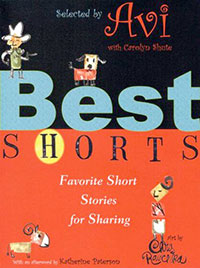 It was in 1846 that Edgar Allan Poe set down critical “rules” for writing the short story. (You can find them on the internet with ease.) Aside from writing short stories that are still read, (and scare readers) he did much to propel and establish the short story as an American form. Think of Fitzgerald, Hemingway, Updike, Steinbeck, O Henry, among many others. Indeed, there was a time when short stories were a staple of American literature, finding publication in an astonishing array of publications, and read by multitudes. Of course the short story has long since become international: Chekov (Russian), de Maupassant (French), Trevor (English), Munro (Canadian), and many more.
It was in 1846 that Edgar Allan Poe set down critical “rules” for writing the short story. (You can find them on the internet with ease.) Aside from writing short stories that are still read, (and scare readers) he did much to propel and establish the short story as an American form. Think of Fitzgerald, Hemingway, Updike, Steinbeck, O Henry, among many others. Indeed, there was a time when short stories were a staple of American literature, finding publication in an astonishing array of publications, and read by multitudes. Of course the short story has long since become international: Chekov (Russian), de Maupassant (French), Trevor (English), Munro (Canadian), and many more.
For the writer they constitute a unique, and difficult, challenge. In fact, there was a time when emergent writers were encouraged to begin their writing apprenticeship with short stories before engaging with a novel.
That prolific and abundant time has passed. And yet, enough short stories are still written and published so that there are a couple of annuals which offer the best stories for a given year.
Having read (and written) short stories for years, it occurred to me that there could be an annual of best short stories written for young people. Alas, they weren’t being written (and published) in sufficient numbers to create a regular volume. Instead, working with colleague and friend Carolyn Shute (an editor) we created a volume of short stories that gathered literary quality together without focusing on a particular theme. Some of the stories are old, “Rip Van Winkle,” and some are new, such as Richard Peck’s “The Special Powers of Blossom Culp.”
What they share is excellence, all selected with an ear for reading aloud. With an afterword by Katherine Paterson, and art by Chris Raschka, the goal was to offer an anthology that gives short story pleasure in many flavors for many tastes, all designed for the young reader.
Broadly speaking, I think teachers (and librarians) miss an opportunity to share such stories with young people. Novels are difficult (and frustrating) for new writers to achieve, but students are quite capable of writing good short stories. They need, however, a template, if you will, to do so. Best Shorts: Favorite Short Stories for Sharing attempts to supply such exemplars. Or try Sudden Fiction International: 60 Short-Short Stories. Your students (and you) will be amazed.
1 thought on “Story Behind the Story #50: Best Shorts”
Richard Peck, Katherine Paterson, and Avi all in one book? How did I miss this?